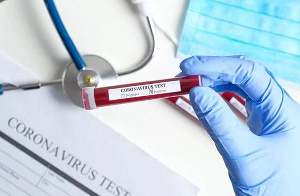Opinions of Tuesday, 26 May 2020
Columnist: Gadeka Dzifa Korku
Living with coronavirus: Guidelines for workplace return
Covid-19 is a global humanitarian challenge. Thousands of health professionals are heroically battling the virus worldwide, putting their own lives at risk in doing so.
Governments and industry are working together to understand and address the challenge, support victims, their families and communities, and also research into treatments and vaccines.
Companies around the world have been forced to explore alternative means to keep employees productive during this period through remote work. As innovative as this is, this solution cannot be implemented by most sectors of the economy.
It is inevitable that we must return to work soon to salvage the economy from the ravages of this pandemic. Employers must therefore take steps to limit exposure, and protect their employees, customers and clients.
The key points to consider as we transition from a pre-covid-19 to a post-covid-19 work environment can generally be summarized as follows:
Employees Travel to work and pre-entry
Use of masks required during employee commutes.
Temperature checks before entry into facility.
Modularized Spaces, with limited interaction across spaces.
Masks and other appropriate PPEs required at all times.
High- frequency cleaning of frequent touch surfaces and spaces.
Improved air filtration/ventilation systems.
Clear posters on safety guidance and sickness protocols.
Common Space Use
Separated lunch seating with dividers on dining table.
Use of non- reusable/disposable dishes at cafeterias.
Periodic health risk categorization through at-home surveys
Send out online health self-assessment program to be filled out to all employees every Sunday regarding COVID- related symptoms.
Those who do not reply would be separately examined at the entrance of company facilities the next day. Survey helps determine health risk of employees and advises on readiness to work.
Communication and Training
Effectively communicate with and train employees on what to expect with workplace return. Use online and remote channels. Include information on:
Sick leave, compensation and related, updated policy guidance.
Database on resources and support available to employees (mental health, childcare, policy guidelines, privacy safeguards).
Information on new work practices, infrastructure and changes to daily schedule and operations.
Personal wellness guidance for outside of the work place.
Develop online modules and training to ensure employees have adequately understand all new guidelines and resources.
Conduct virtual town halls with leadership to address questions on a company- wide forum and ensure clarity of message to workforce.
Proactively survey employees to gather feedback on measures adopted and inform new workplace safety measures.
Share pre-packaged printed material (consistent with displays and posters used in the workplace)
Conclusion
It must be required that all employees complete Return to Work training provided to workers on COVID 19 exposure limitation and prevention measures. This should include commuter safety practices such as wearing masks in public, avoiding rush hour, choosing to walk for part of the trip, etc. The use of PPEs on commute to work should be required where necessary. Employees should be provided with sanitation packs to be able to quickly access wipes and gloves for use. Finally, employees should be trained on best practices for cleaning and disinfecting following use of public transport and prior to entry.
Entertainment










